This was published 5 months ago
‘I want to be the biggest brand in the country’: The next gen of Aussie shoemakers
Australia’s footwear manufacturing industry is all but gone, as rising costs push factories offshore and access to fast fashion drives a waning appreciation for handmade goods. In the face of these challenges, a small group of passionate craftspeople are keeping the art of shoe making alive and preserving it for the next generation.
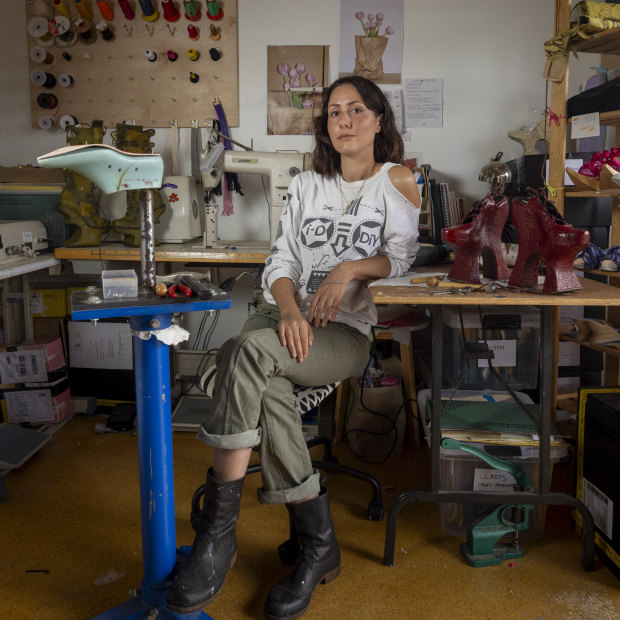
Bespoke shoemaker Matea Gluscevic at her studio in Melbourne.Credit: Wayne Taylor
Matea Gluscevic, 36, has been making bespoke and handmade shoes under her eponymous label since 2019. Known for her whimsical, daring designs that often push the limits of what we think of as shoes, her work stands out in a sea of mass-produced sneakers. But recently she’s hit a crossroad, as she says her current approach is “unsustainable”.
Due to poor sales, she has decided to close the made-to-order portion of her business to focus on bespoke shoes. Her clientele, which includes brides and people who need special considerations in their shoes, like those with mobility issues, are more willing to pay for the product.
A bespoke pair of shoes takes around a month to make – from the conceptualisation stage to the finished product – and starts at $1500. Still, the hours she works – which equate to a part-time job – are not reflected in what she’s paid.
“My issue is that [bespoke] is not necessarily enough to live off,” she says. “So I’m sort of in a position of assessing what I’m doing.”
There’s also the not-so-small matter of people’s purse strings getting tighter. “The reality is, lots of the younger demographic, who I can tell love my work, are not in a position to be paying $700 for a pair of shoes,” says Gluscevic.
“Which is completely understandable. I’m not in that position either, but I can’t make it for any less, it just doesn’t work.”
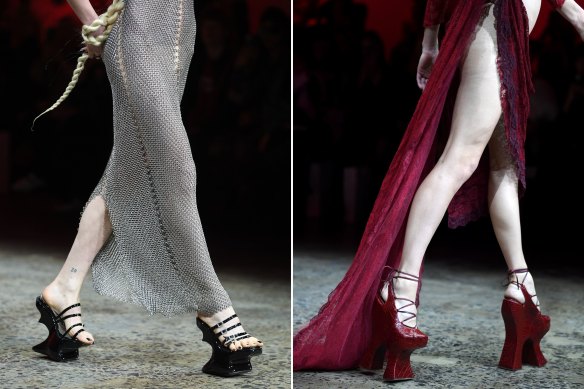
Shoes designed and made by Matea Gluscevic for the Nicol & Ford show at Australian Fashion Week 2024.Credit: Getty Images
All this has not been for a lack of exposure. She’s worked with fashion designers Nicol & Ford, collaborated with Johnny Walker on a collection of sneakers for the AFLW and had her work shown in Sydney’s Powerhouse Museum.
However, she says all but the Johnny Walker collaboration were done for free – something many emerging creatives are expected to do to raise their profiles.
“The reality is, lots of the younger demographic, who I can tell love my work, are not in a position to be paying $700 for a pair of shoes.”
Matea Gluscevic
Gluscevic also has scoliosis, which is compounded by the stress the craft puts on the body.
“For anybody, it’s lots of time sitting, sewing, drawing, cutting, hammering, standing at a grinder for hours. It’s a very physical job.”
Working on big projects in the past, she says she’s been unable to sleep due to muscle cramps, which haven’t been alleviated by any amount of physiotherapy or massage.
All this – the financial and physical toll of shoe making – not to mention the time involved, begs the question: why do it in the first place?
For Gluscevic, it’s a necessity.
“I have an unbearable amount of ideas,” she says. “I start feeling stressed if I don’t get them out of my head into the world.”
But the challenges she’s faced – and continues to face – are similar to those many of her peers grapple with. Some 720 Australians have listed their occupation as shoemakers, according to the latest census data. Australia’s footwear manufacturing industry is all but gone, barring a few small businesses and RM Williams’ operation in Adelaide.
Below are the Australian shoemakers, designers and educators for whom footwear is also a labour of love.
The teachers
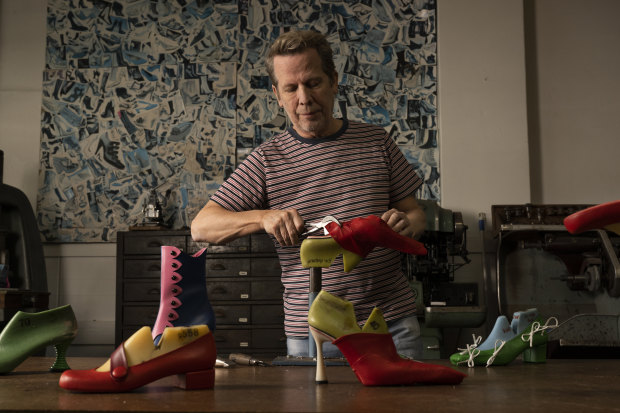
Shoemaker and founder of School of Footwear in Sydney, Darren Bischoff.Credit: Louise Kennerley
The day Darren Bischoff, founder of the School of Footwear in Sydney, decided to pursue a career in shoemaking is the day the industry closed down. The year was 1988 and the introduction of tariff reductions led to many of the country’s major footwear manufacturers moving offshore.
In the decades since, Bischoff has witnessed the slow decline of the industry. The opening of his footwear school in 2011 was partly borne out of a desire to teach the craft to the next generation (TAFE’s shoemaking courses in Sydney, Brisbane and Adelaide all closed in 2009). It also functions as a workshop space for other professional shoemakers.
One of the biggest challenges, Bischoff says, is sourcing specialist materials and tools – including heels and shoe lasts (moulds) – needed for their craft. He now has to travel overseas a few times a year to source them.
“This has been the story since ’88, slowly but surely all the bits and pieces have gone,” he says.
“The mass manufacturing industry is gone and will never come back. But I’m very interested in some of these young people coming through.”
Darren Bischoff
Even the technicians who maintained his machinery have aged out of the industry, and Bischoff has had to train himself in the specialist skills required to keep them running.
Still, his comprehensive courses have been incredibly successful, including a sneaker course that’s popular among teenage boys. Some who come through his doors simply want to do something hands-on outside their professional lives, but others have gone on to pursue a career in shoemaking.
“People are just so surprised and amazed that you can still make shoes by hand in this country,” he says.
But as a whole, Bischoff says he doesn’t have much hope for the craft as an industry. “But I’m very interested in some of these young people coming through,” he says.
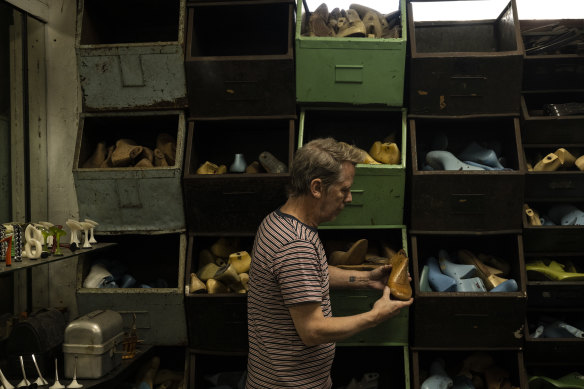
Bischoff with his collection of shoe lasts, which he says have become harder to source.Credit: Louise Kennerley
Andrew Robinson has taught at RMIT’s school of footwear for the past two decades. It is now the only nationally accredited program for shoemaking in the Southern Hemisphere.
The biggest thing Robinson would like to see, to support the next generation, is more government funding.
“I would love to have a course that’s three years or four years long. Even the one-year course we offer, it’s intense but really it’s the tip of the iceberg with all the skills, refinement and different areas of footwear there are to learn.
“For students who leave the program, we give them as much support [as possible] and I’ll make myself available 24/7 for them, but setting up a small business in Australia at the moment is so hard.”
Robinson says there also needs to be more support from the Australian fashion industry.
“There needs to be a greater push and exposure for these custom-made shoemakers.”
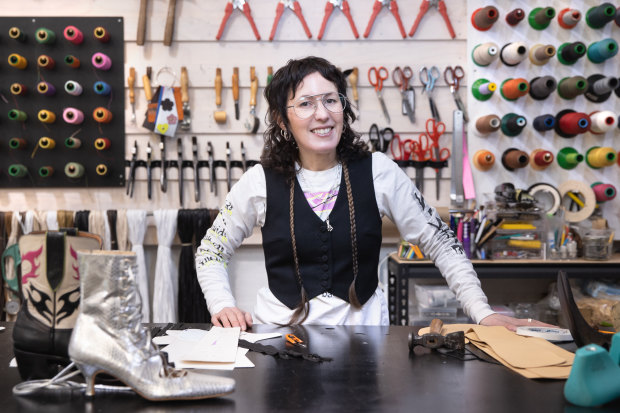
Lou Clifton, owner of Melbourne Shoe School.Credit: Simon Schluter
Lou Clifton launched her footwear school in New Zealand in 2015, which she relocated to Melbourne earlier this year. Her short courses – ranging from one to five days – give students a crash course in the fundamentals of shoemaking. Her students are mainly hobbyists, who she says have been spurred by burgeoning craft movement.
“When I started, Etsy was becoming big, and it was just a reaction to people wanting an alternative to mass-produced goods or to understand how mass-produced goods were made.”
She says her students get a feeling of satisfaction from their work.
“You start out with some nerves and then have to solve a design problem, and it’s quite meditative. You get a real and important rush at the end when you realise that you’ve crafted something wearable.”
Raff McGuinness, Above the Ground
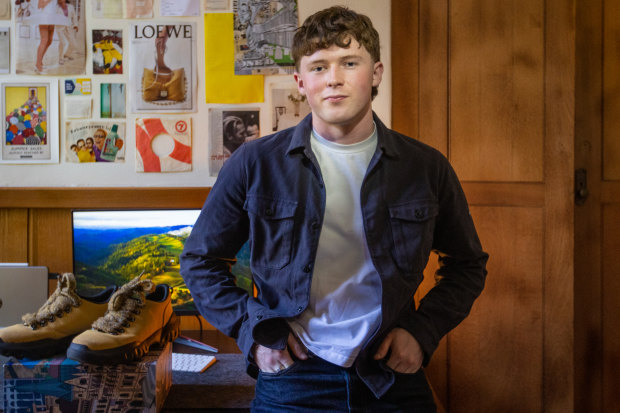
Young footwear designer Raff McGuinness.Credit: Simon Schluter
Raff McGuinness, a 20-year-old communications student from Melbourne, has lofty ambitions for his footwear brand Above the Ground.
“The plan is to be the biggest footwear brand in the country. And then the biggest footwear brand in streetwear.”
Later this year, he will launch the brand with just two silos – a loafer and a boot – which he’s been working on for the past two years, making them the best they can be.
“My priorities are, how can I make an extremely good product as opposed to how can I just make it good?”
McGuinness’ loafer, which he’s described as a “loafer for a sneakerhead”, was conceived from his frustrations with uncomfortable loafers. He’s not reinventing the wheel, but striving for greatness. Little details – like mohair laces on his boots – are what he believes will set his product apart.
But McGuinness’ entrepreneurial spirit started long before he started Above the Ground. In high school, he sourced hard-to-find football boots online and resold them to an Australian audience, building up a strong social media following overtime. He’s also worked in the performance footwear space – he and his business partner did some footwear customisation for the Australian Olympic team earlier this year.
“No one’s really gone and tried to disrupt the streetwear space for footwear.”
Raff McGuinness
He says part of his desire to start the brand stems from seeing a lack of innovation in the Australian footwear industry, particularly in the streetwear space.
“It’s a much more difficult process to start in footwear than it is to start in clothing,” says McGuinness.
“You can make a T-shirt, and if the T-shirts are a seven out of 10 people will still wear it. [But] if you make a shoe and the shoes are a seven out of 10, people will be reminded of that every time they step in your shoes. It hurts.”
McGuinness is working with overseas manufacturers, who require high order quantities, which carry high cost, and the system can be difficult to navigate for someone with little experience.
“You sort of get sucked into believing what other people tell you. You’ll basically be like, ‘Oh, that must be the right way of doing things’, so I think that was the most difficult part for me.”
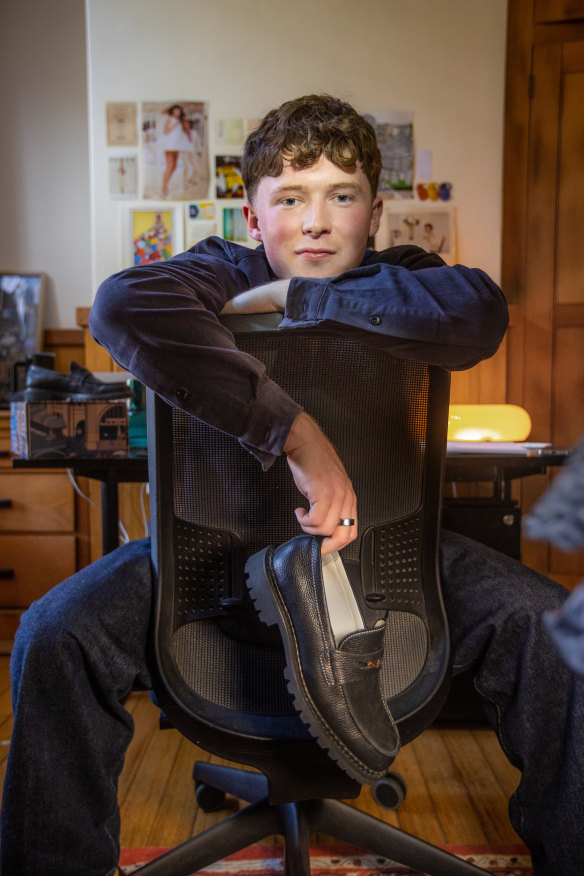
McGuinness with a prototype of his loafer.Credit: Simon Schluter
Effi and Emily Mavratzas, Didyma Shoes
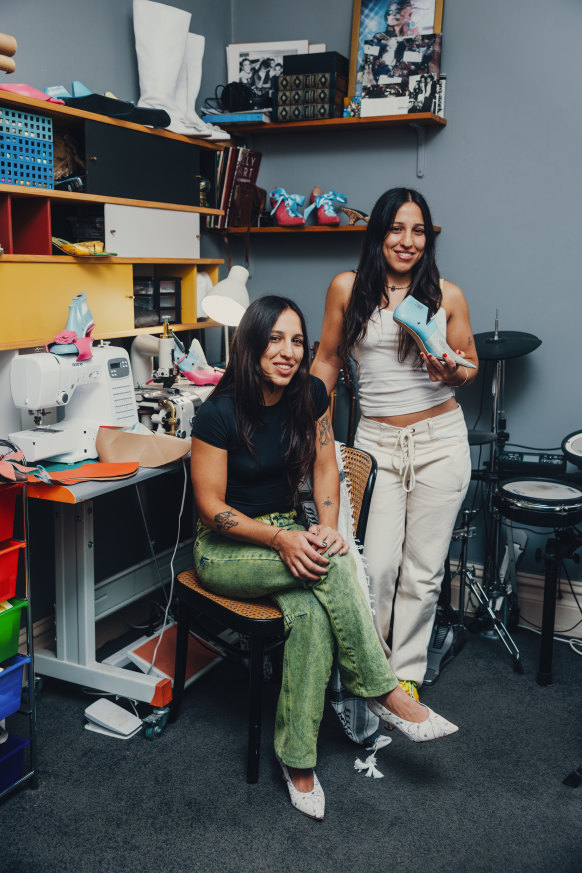
Emily, left, and Effi Mavratzas in their home studio in Sydney.Credit: Dion Georgopoulos
Effi and Emily Mavratzas became students at the School of Footwear in Sydney during the pandemic where they fell in love with the craft. Twins, the 33-year-olds both work full-time in fashion but have launched their own brand, Didyma shoes, where they make bespoke pieces for friends and family. Each pair goes for around $450 and can take anywhere from a day to weeks to make.
Their feminine styles, often adorned with flowers or bows, take inspiration from vintage footwear.
“Effi and I have both always been very much into fabrics and textures and colours and the craftsmanship behind it...but there isn’t a single source, there are so many things that really inspire us,” says Emily.
One of the biggest hurdles – besides finding time outside their full-time jobs – has been finding space to accommodate the bulky machinery required to make shoes. The pair have recently had to move their workshop back home after their studio space became water damaged.
“It’s more similar to a trade than it is to dressmaking. It can be quite messy, the machinery can be quite heavy and it’s quite dirty, in a way.”
Emily Mavratzas
Sourcing materials, tools and equipment has been another challenge.
“Shoemaking is a dying art, and it’s not really something that is happening any more here,” says Effi. “That also makes it really difficult to find the tools and the machines that you need. Because no one’s using them, no one’s selling them.”
She says they’ve had some success on Facebook Marketplace sourcing equipment from old shoemakers, but that it’s still difficult to find.
And despite coming from a fashion background, they’ve both been surprised by how labour-intensive and time-consuming the craft is.
“It’s more similar to a trade than it is to dressmaking,” says Emily. “It can be quite messy, the machinery can be quite heavy, and it’s quite dirty, in a way.”
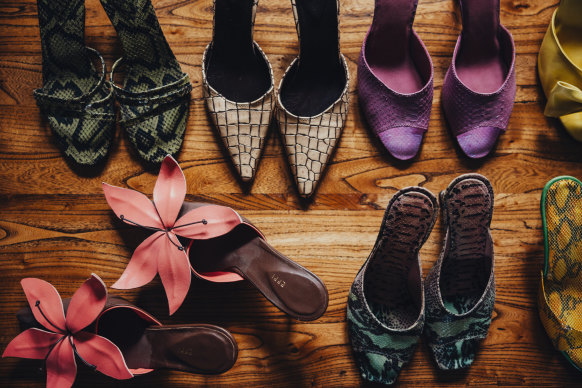
A selection of handmade shoes from Effi and Emily Mavratzas’ brand Didyma shoes.Credit: Dion Georgopoulos
Breeze, Post Sole Studio
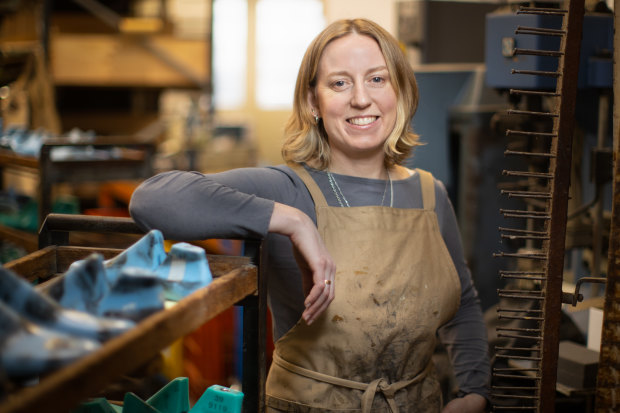
Breeze Powell, cordwainer and founder of Post Sole Studio in Melbourne.Credit: Simon Schluter
For Breeze Powell, 42, the co-founder of Melbourne footwear brand Post Sole Studio, shoemaking started as a necessity. Born with one leg slightly longer than the other, she had special requirements for footwear.
After completing a Certificate IV in Custom-Made Footwear at RMIT in 2007, Powell started working in a factory making comfort shoes for people with orthotics and problematic feet. After seven years, the owner of the business retired and offered to sell her the factory’s machinery. With her former business partner Myra Spencer, Powell founded Post Sole Studio and moved to Fitzroy. The brand specialises in well-crafted, made-to-order leather classics at their studio in Abbotsford, where they have since moved.
The label outsources their stitching, but the rest is done in-house by Powell, who runs the business alongside general manager Yoshi Maruyama.
She would love to expand Post Sole Studio but says it’s just not viable in this current climate.
“I wish there was a little bit of government support. I would love to purchase new machinery or have the ability to upscale the business, so that I could employ more people. But just making that leap into the next stage of business is really hard,” says Powell.
“Being able to source good materials without having to pay so much in shipping to bring in everything from Europe, that’s really hard.”
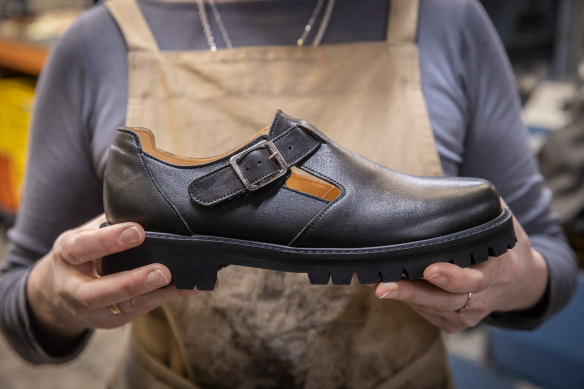
The “Dune” shoe from Post Sole Studio.Credit: Simon Schluter
Make the most of your health, relationships, fitness and nutrition with our newsletter. Get it in your inbox every Monday.